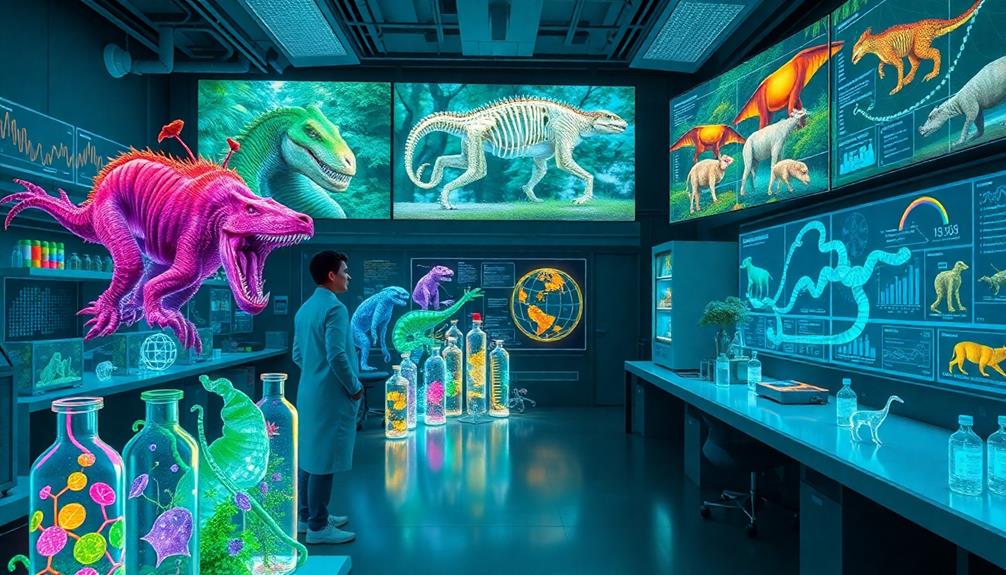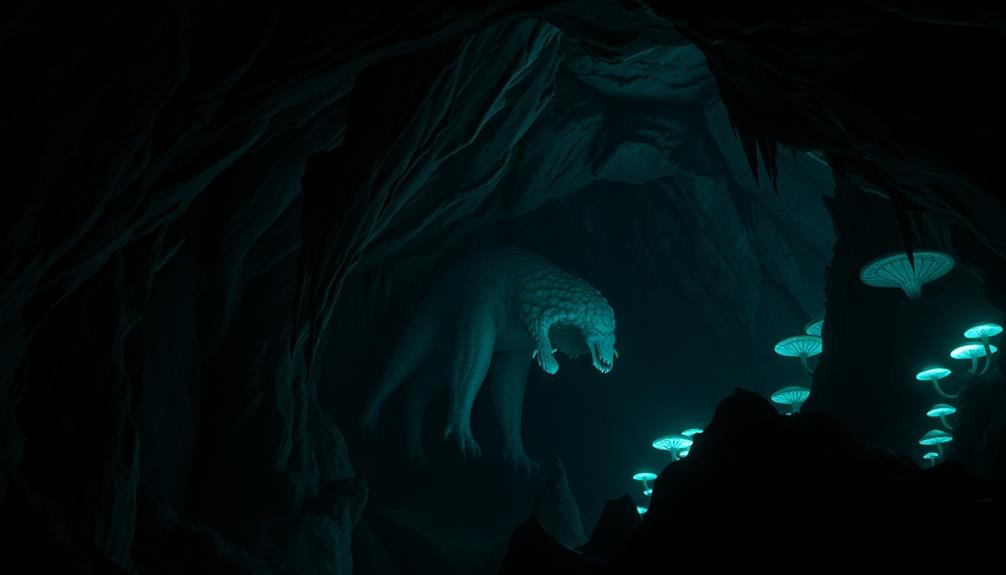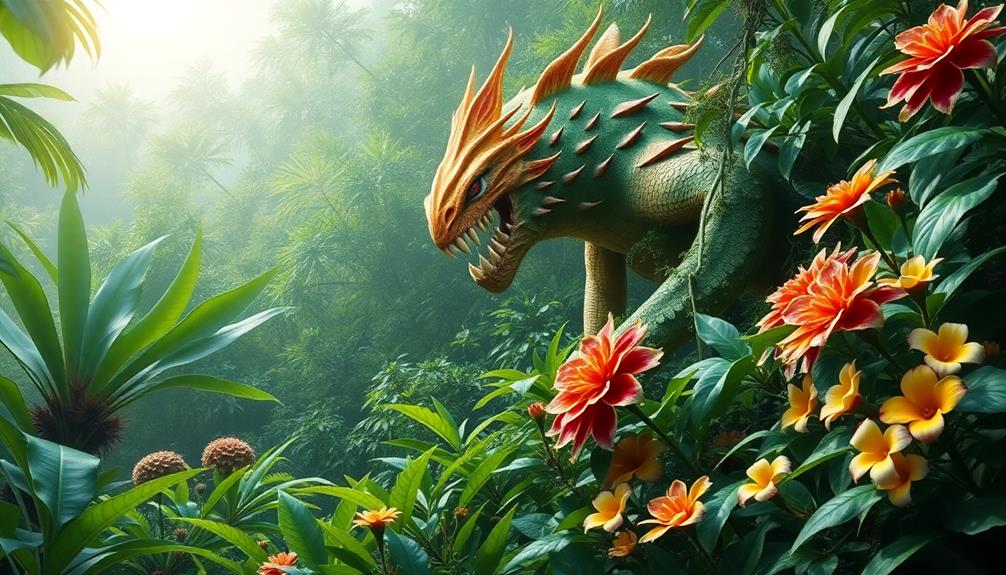If monster DNA samples are already being analyzed in labs, you're witnessing a thrilling intersection of science and legend. Researchers, like those from the University of Otago, have collected extensive samples from locations like Loch Ness. Their studies reveal a significant eel population, which could explain many sightings attributed to mysterious creatures. While such findings enhance our understanding of biodiversity, they also fuel ongoing curiosity about the unknown. This transformative research opens the door for more discoveries about what lies beneath the surface, drawing you into the enchanting world of ecological mysteries. There's so much more to uncover!
Key Takeaways
- Current DNA research, like the Loch Ness study, analyzes environmental samples to explore the existence of legendary creatures.
- If monster DNA samples are being analyzed, findings could reveal insights into species linked to folklore.
- Advanced eDNA techniques enable researchers to identify genetic markers of elusive or mythical creatures.
- Ongoing studies may debunk or support claims of monsters by confirming or dismissing DNA samples from various habitats.
- Public interest in mythical creatures can drive funding and research efforts, enhancing biodiversity knowledge and conservation initiatives.
Current Status of DNA Research

DNA research is making waves in the scientific community, especially with recent studies like those conducted at Loch Ness. Led by Neil Gemmell from the University of Otago, an international team collected water samples to analyze the DNA present in this iconic loch. They examined over 500 million environmental DNA sequences, uncovering a wealth of genetic information from various species in the loch.
Among the notable findings was a significant amount of eel DNA detected at multiple sampling locations. This discovery raises intriguing questions about the size of eels in Loch Ness and their potential connection to the many sightings of Nessie, the elusive Loch Ness Monster.
The results of this groundbreaking DNA analysis, set to be published in January 2019, promise to enhance our understanding of the biological diversity present in Loch Ness.
This research not only sheds light on the life forms inhabiting the loch but also sets the stage for future ecological studies and conservation efforts. As scientists explore deeper into the DNA landscape of Loch Ness, you can expect continued excitement and exploration surrounding this legendary body of water.
The Eel Theory Explained

Recent findings from Loch Ness have sparked renewed interest in the theory that giant eels might explain the elusive sightings of the Loch Ness Monster. Recent DNA analysis revealed significant amounts of eel DNA, indicating a robust eel population in the area. This raises intriguing questions about the potential size of these eels. Some speculate that giant eels could easily be mistaken for the legendary creature.
Environmental DNA studies collected samples from various locations and depths in Loch Ness, focusing on identifying genetic markers of aquatic species. Skeptics often highlight the absence of DNA from large marine animals like sturgeons or plesiosaurs, which lends further credence to the eel hypothesis.
As you explore the shores near Urquhart Castle, you can't help but wonder if these giant eels, lurking in the depths, are the source of many sightings.
The ongoing research into Loch Ness's biodiversity, particularly its eel population, continues to provide insights into what might contribute to the legendary sightings.
Impacts on Biodiversity Studies

Analyzing environmental DNA from Loch Ness has significant implications for biodiversity studies in the region. Recent findings revealed substantial amounts of eel DNA, suggesting a robust population that might explain some Loch Ness Monster sightings. This genetic analysis highlights the effectiveness of eDNA sampling, allowing researchers to rapidly assess biological diversity, even in remote locations.
Moreover, the discovery of high levels of DNA from land-based species indicates a rich biodiversity that warrants further ecological research. As you explore these results, consider how they can inform conservation strategies. Identifying both native and invasive species in Loch Ness is essential for effective ecosystem management.
The ongoing research into the loch's biodiversity may also lead to the identification of previously undocumented species, enhancing your understanding of the ecological dynamics at play.
As you investigate deeper into these studies, you'll see how eDNA can impact conservation efforts and biodiversity preservation. By examining the genetic makeup of Loch Ness, you not only contribute to the scientific community but also help protect the unique ecosystem that has fascinated people for generations.
Cultural Significance of Nessie
The fascinating studies on Loch Ness's biodiversity not only reveal the ecological richness of the area but also highlight the cultural significance of Nessie, the legendary creature at its heart. The legend of Nessie dates back to 565 AD, featuring an encounter with Saint Columba that established a historical context for this enduring myth.
Nessie has captured imaginations worldwide, becoming a global icon that draws over 400,000 visitors to the Scottish Highlands each year. The Surgeons Photograph of 1934, while later debunked as a hoax, fueled modern fascination and solidified Nessie's presence in popular culture.
Ongoing research, including DNA analysis, promises to keep the mystery alive, enhancing public interest rather than diminishing it. Here's a quick look at Nessie's cultural significance:
| Aspect | Description | Impact on Culture |
|---|---|---|
| Historical Context | Encounter with Saint Columba | Foundation for the legend |
| Popular Culture | Films, literature, and merchandise | Global icon and tourism driver |
| Ongoing Research | DNA analysis and biodiversity studies | Renewed interest in the mystery |
| Myths | Celtic and local folklore | Reflection of societal fascination |
| Mystery | Unsolved questions about existence | Continues to inspire exploration |
Nessie remains a enchanting symbol of the unknown.
Future of Loch Ness Exploration

As interest in Loch Ness continues to grow, the future of its exploration looks promising, driven by cutting-edge DNA analysis and collaborative research efforts.
Recent studies from the University of Otago have gathered over 300 water samples, providing a robust dataset that could redefine our understanding of the loch's biodiversity. These findings could lead to identifying not only known species, like eels, but also uncovering new or invasive species that inhabit this mysterious ecosystem.
The excitement surrounding the Loch Ness Monster fuels ongoing investigations, ensuring that this legendary site remains a focal point for scientific inquiry.
- Innovative environmental DNA surveys may emerge, influencing research in other inaccessible ecosystems.
- Collaborative efforts with groups like Loch Ness Hunters aim to sustain public interest and scientific exploration.
- Enhanced understanding of the unique biodiversity in Loch Ness can inform conservation efforts.
Conclusion
As you ponder the possibility of monster DNA samples being analyzed in labs, consider the implications of the Eel Theory. It could reshape our understanding of Loch Ness and the creatures that inhabit it. You can't help but feel the thrill of discovery, as each finding adds layers to biodiversity studies and cultural tales. With ongoing exploration, who knows what truths might surface? The mystery of Nessie isn't just folklore; it could be a key to revealing nature's secrets.










